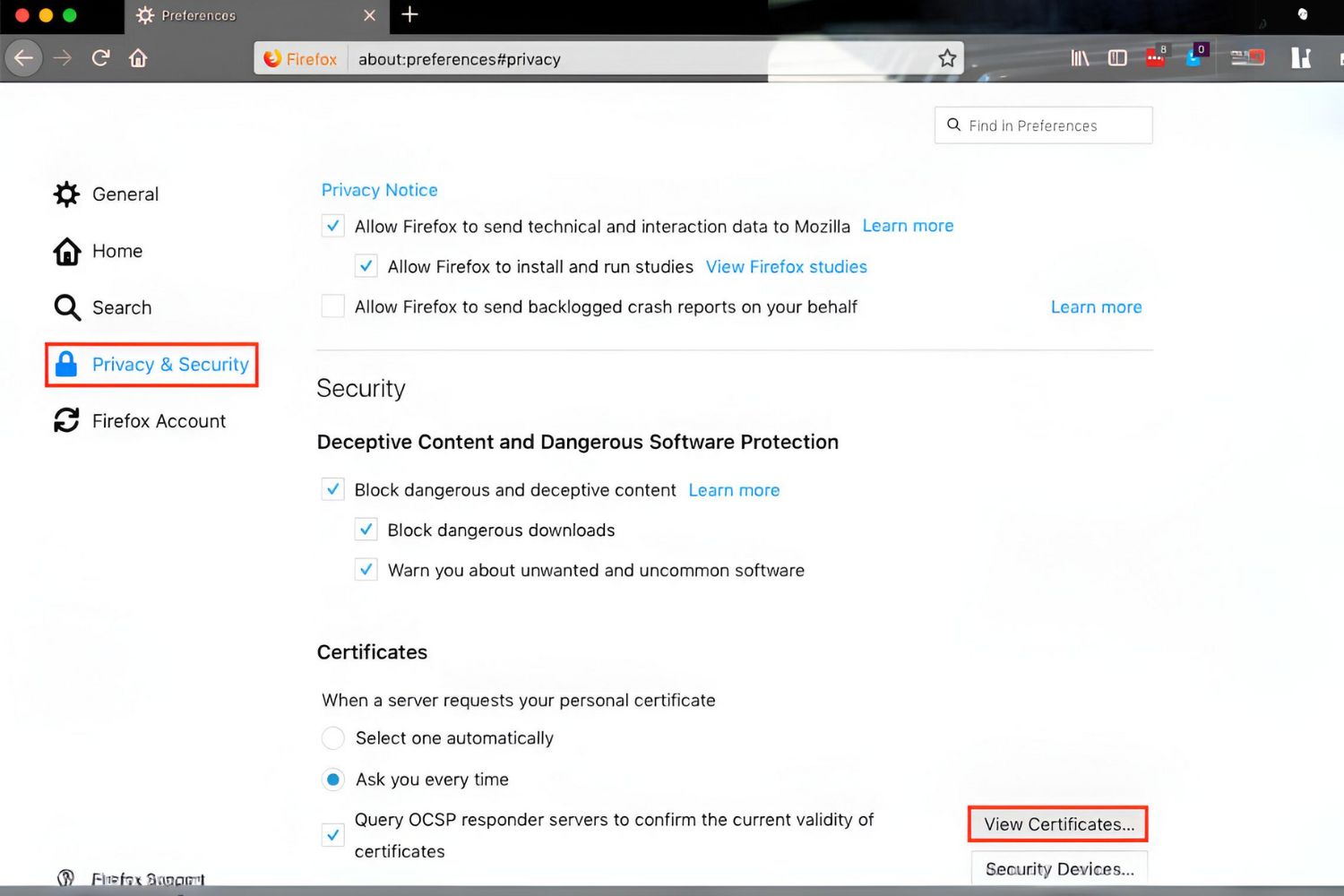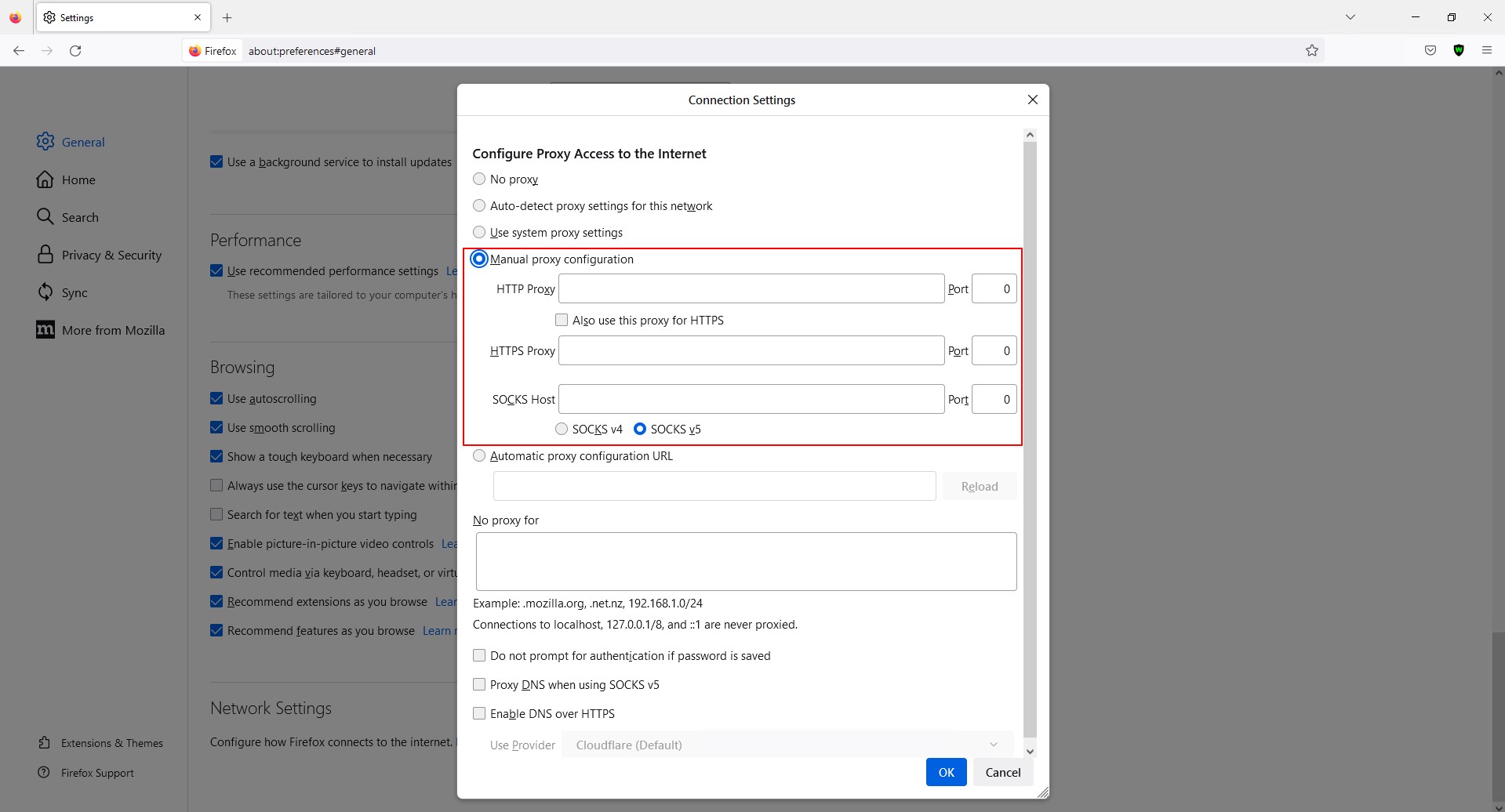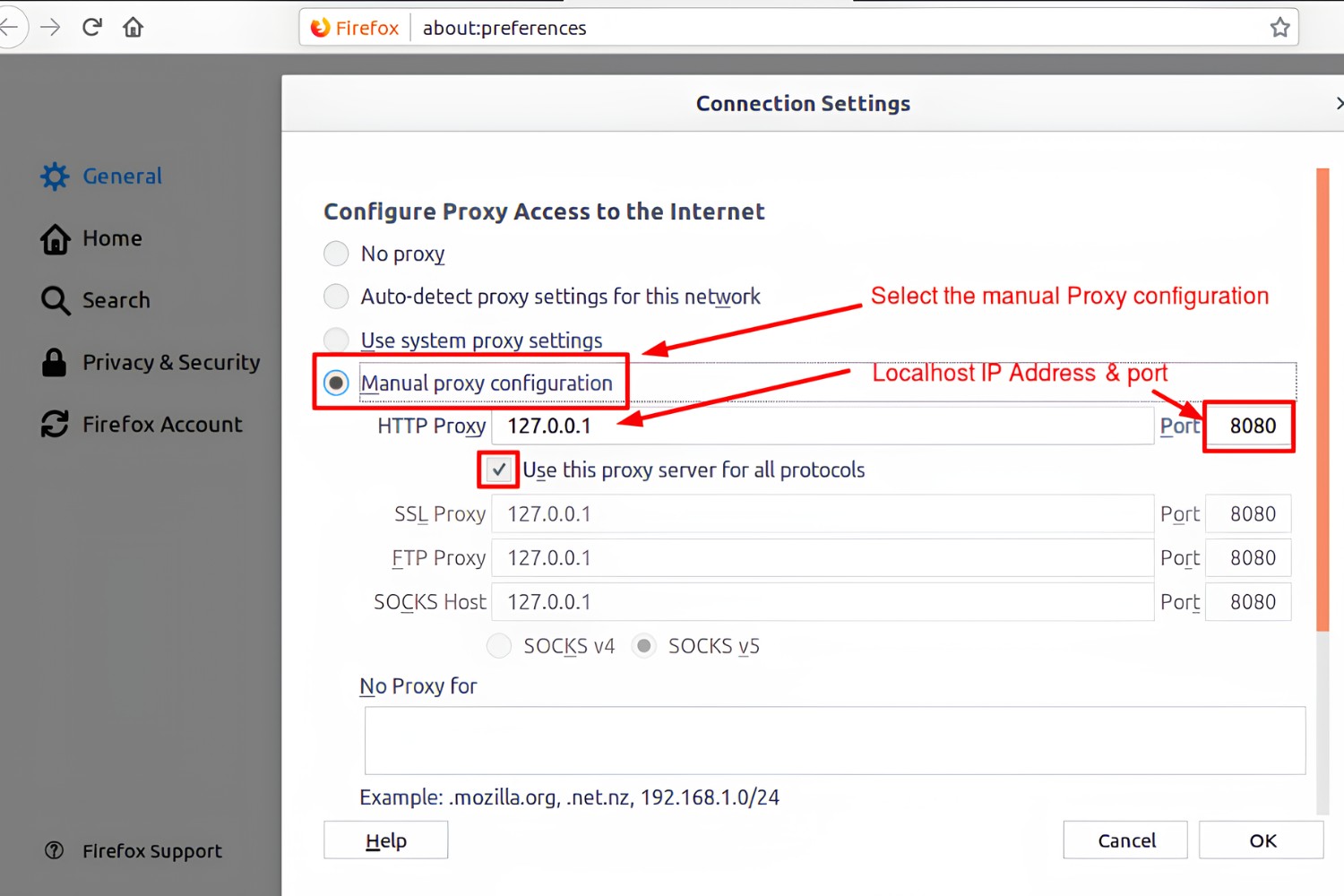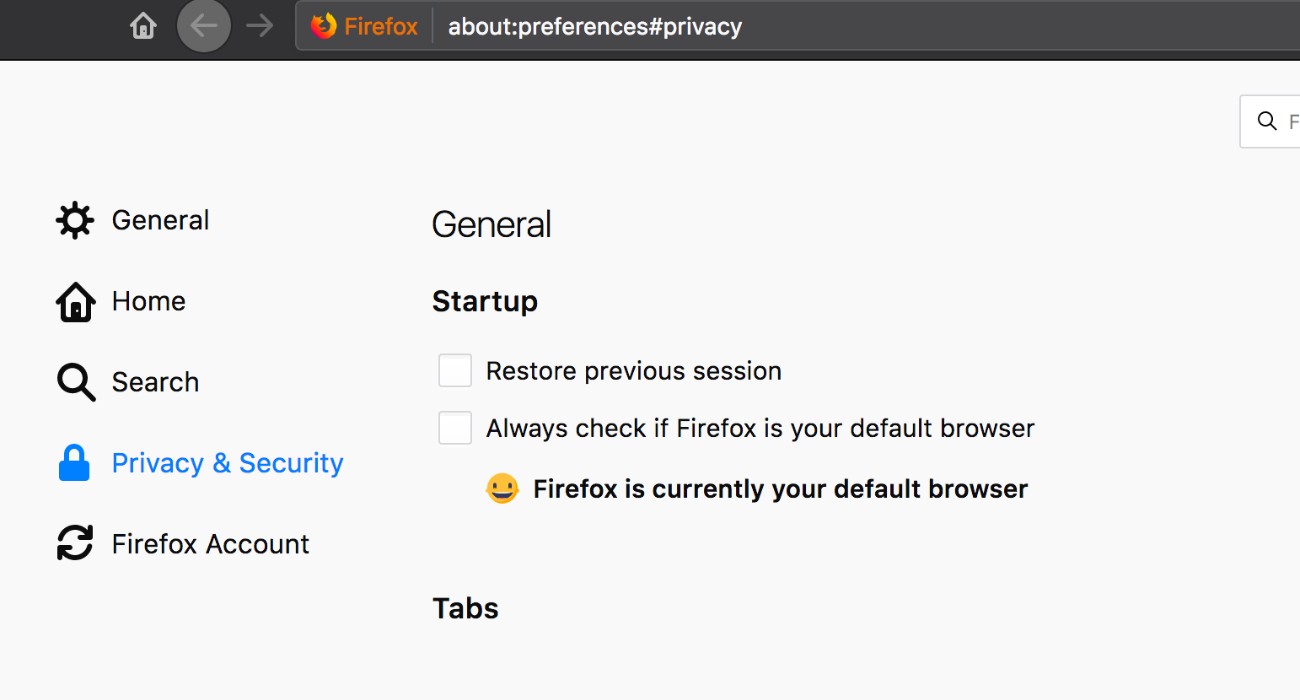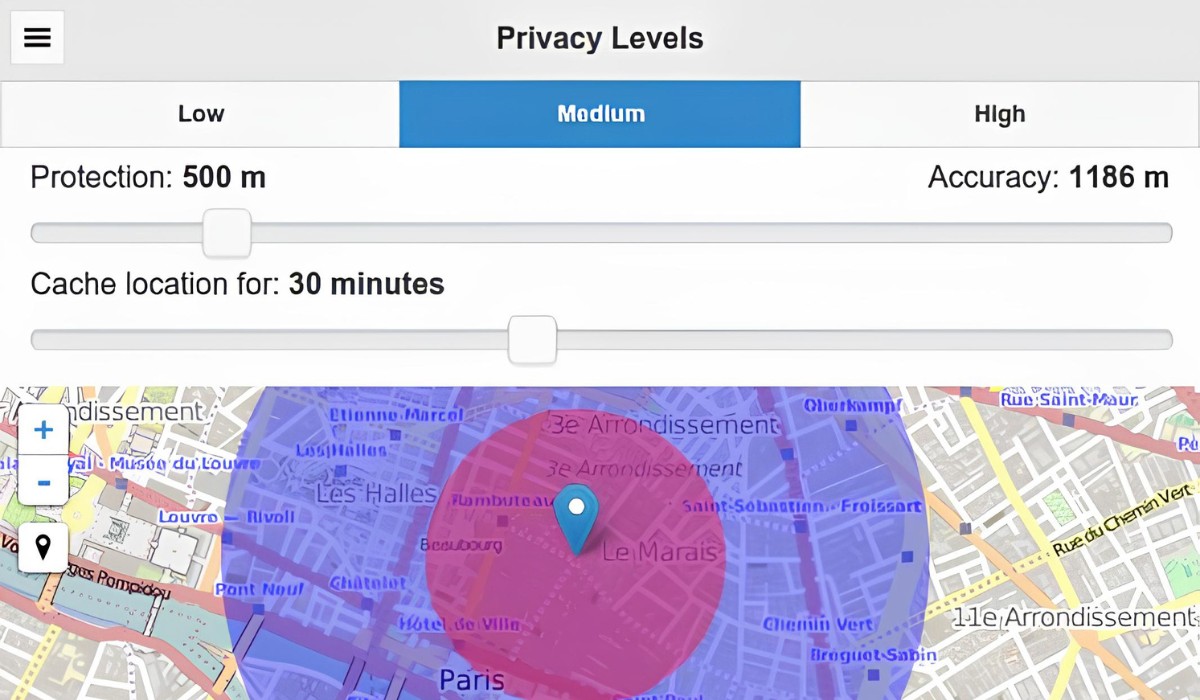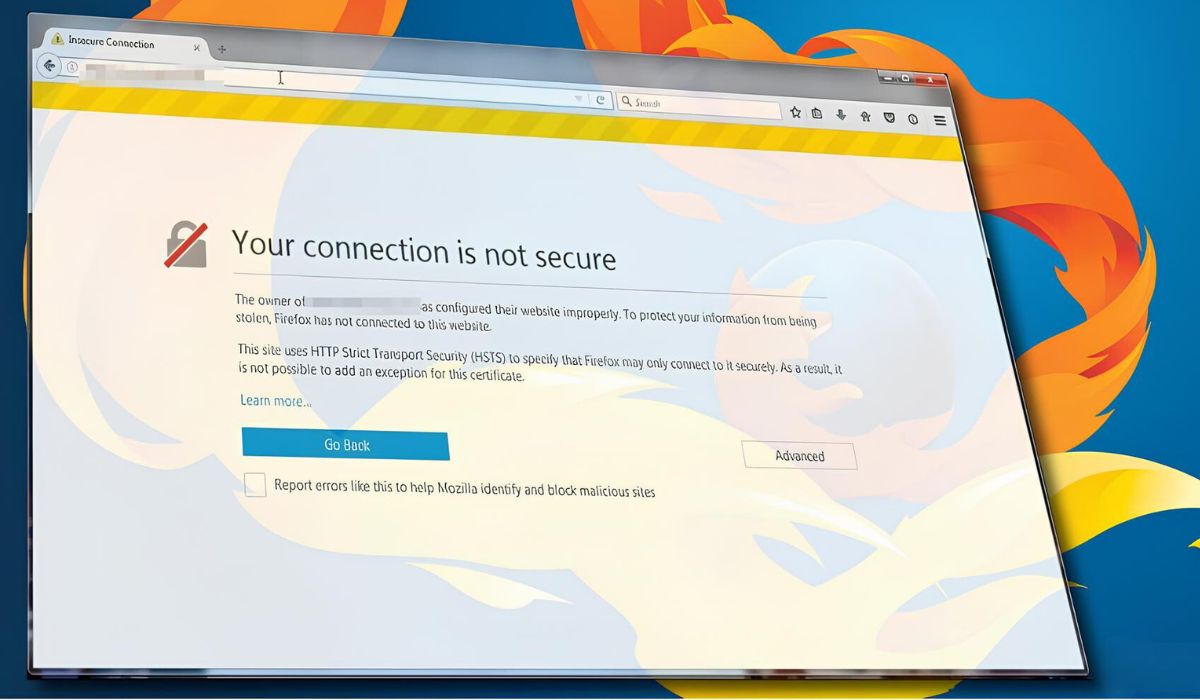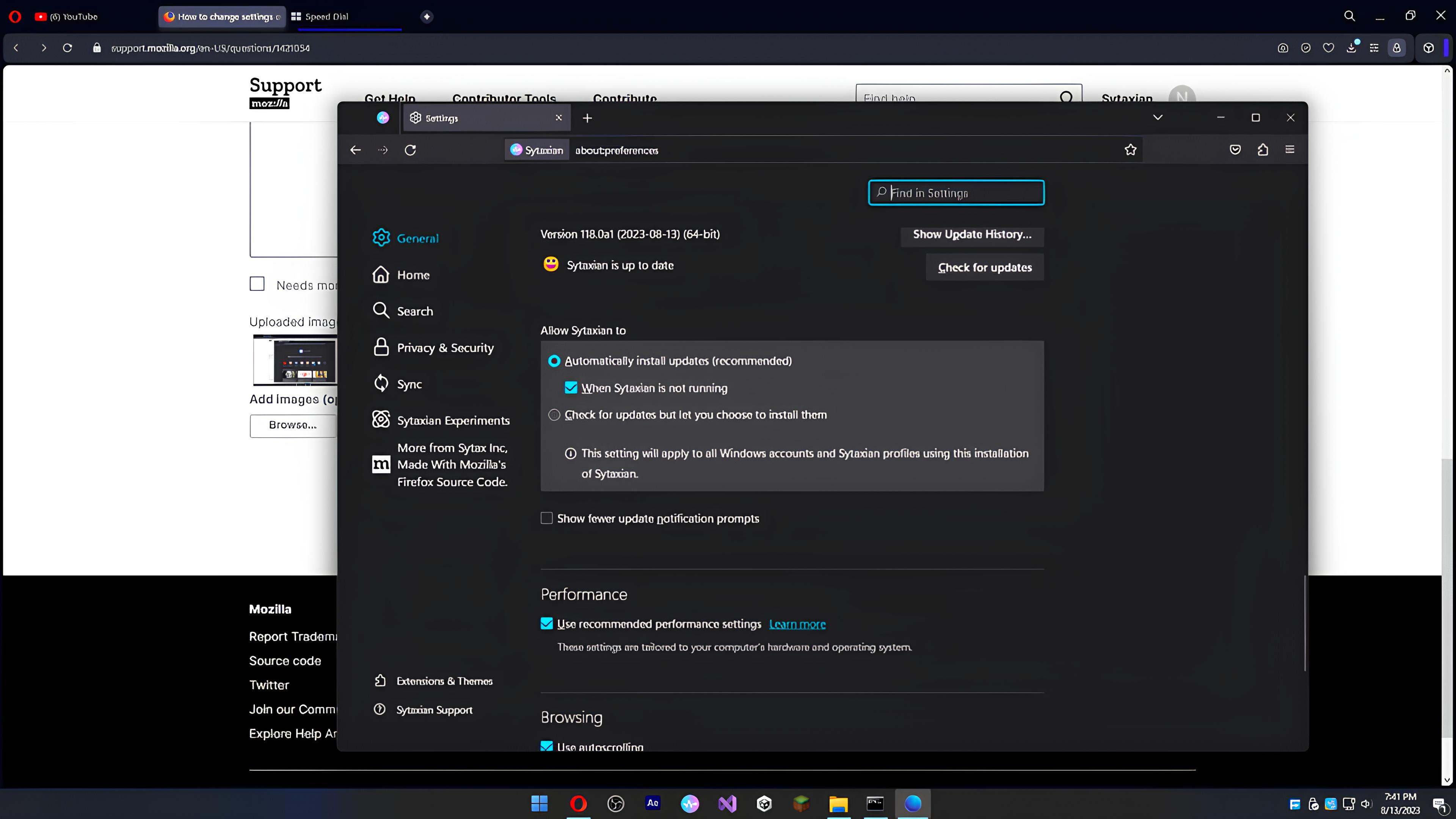Introduction
Installing a certificate in Firefox is a crucial step in ensuring secure and encrypted communication while browsing the web. Certificates play a pivotal role in verifying the authenticity of websites, safeguarding sensitive data, and establishing a secure connection between the user's browser and the web server. By following the steps outlined in this guide, you can effectively install a certificate in Firefox, bolstering your online security and privacy.
In today's digital landscape, where cyber threats loom large, the significance of certificates cannot be overstated. They serve as digital passports, validating the legitimacy of websites and encrypting data transmission to prevent unauthorized access. Whether you're accessing online banking services, making e-commerce transactions, or simply browsing the web, having a valid and trusted certificate is paramount for protecting your personal information from prying eyes and malicious actors.
By understanding how to install a certificate in Firefox, you empower yourself to take control of your online security. This knowledge enables you to verify the authenticity of websites and ensure that your sensitive information, such as login credentials, credit card details, and personal data, remains shielded from potential threats. Moreover, by actively participating in the management of certificates, you contribute to a safer and more secure online environment for yourself and others.
As we delve into the step-by-step process of installing a certificate in Firefox, it's important to approach this task with a sense of empowerment and responsibility. By doing so, you not only enhance your own online security but also contribute to the collective effort of fortifying the web against cyber threats. Let's embark on this journey to bolster our digital defenses and embrace a safer and more secure online experience.
Step 1: Accessing the Certificate Manager
Accessing the Certificate Manager in Firefox is the initial step towards installing a certificate and fortifying your online security. The Certificate Manager serves as a centralized hub for managing various types of certificates, including those for websites, email, and personal identification. By navigating to this essential tool within the browser, users can seamlessly import, view, and manipulate certificates to ensure secure and encrypted communication.
To access the Certificate Manager in Firefox, follow these straightforward steps:
-
Open Firefox: Launch the Firefox web browser on your computer or device. Ensure that you are running the latest version of Firefox to access the most advanced security features and functionalities.
-
Navigate to Preferences: Click on the three horizontal lines in the upper-right corner of the browser window to open the main menu. From the dropdown menu, select "Preferences" to access the browser settings.
-
Access Privacy & Security Settings: Within the Preferences window, locate and click on "Privacy & Security" in the left-hand sidebar. This section houses a range of privacy and security-related options, including those pertaining to certificates and encryption.
-
Scroll Down to Certificates: In the Privacy & Security settings, scroll down to find the "Certificates" section. Here, you will find various options related to managing certificates, including viewing and importing them.
-
Click on View Certificates: Within the Certificates section, click on the "View Certificates" button. This action will open the Certificate Manager, providing you with a comprehensive view of the certificates currently stored in your Firefox browser.
Upon successfully accessing the Certificate Manager, you are now ready to proceed with the next steps of importing and trusting the certificate, thereby bolstering the security of your online interactions. This pivotal first step sets the stage for actively managing certificates and ensuring a safer and more secure browsing experience within the Firefox browser.
By familiarizing yourself with the process of accessing the Certificate Manager, you gain the knowledge and capability to take charge of your online security. This foundational understanding empowers you to navigate the intricate landscape of digital certificates and actively contribute to fortifying the web against potential cyber threats.
Step 2: Importing the Certificate
Importing a certificate into Firefox is a fundamental aspect of fortifying your online security and ensuring encrypted communication with websites. When you encounter a website that presents a certificate for validation, importing it into your browser allows you to establish a secure and trusted connection, thereby safeguarding your sensitive data from potential threats. By following the steps outlined below, you can seamlessly import a certificate into Firefox, bolstering your digital defenses and enhancing your browsing experience.
-
Access the Certificate Manager: As a continuation of the previous step, ensure that you are within the Certificate Manager in Firefox. This is where you will initiate the process of importing the certificate. If you have navigated away from the Certificate Manager, simply follow the steps outlined in Step 1 to access it once again.
-
Click on Import: Within the Certificate Manager, locate and click on the "Import" button. This action prompts a dialogue box to appear, allowing you to specify the location of the certificate file that you intend to import. It's important to note that the certificate file may be provided to you by the website or entity that you are interacting with.
-
Specify the Certificate File: After clicking on the "Import" button, you will be prompted to specify the location of the certificate file on your computer or device. Navigate to the directory where the certificate file is stored and select it for import. Once the file is selected, proceed by clicking the "Open" button to initiate the import process.
-
Review Certificate Details: Upon successfully selecting the certificate file for import, Firefox will present you with a summary of the certificate details, including the entity to which the certificate is issued and its expiration date. Take a moment to review these details to ensure that the certificate aligns with your expectations and the website's legitimacy.
-
Complete the Import Process: After reviewing the certificate details, proceed by clicking the "OK" button to complete the import process. Firefox will then add the imported certificate to its repository, allowing you to establish secure and trusted connections with the corresponding website.
By effectively importing the certificate into Firefox, you establish a foundation for secure and encrypted communication with websites, bolstering your online security and privacy. This proactive approach empowers you to actively manage certificates and contribute to a safer and more secure web environment for yourself and others.
Step 3: Trusting the Certificate
Trusting a certificate in Firefox is a pivotal step in establishing a secure and encrypted connection with a website, thereby ensuring the authenticity and legitimacy of the digital certificate. By placing trust in the certificate, users affirm their confidence in the website's identity and encryption capabilities, fostering a safe and secure browsing experience. This crucial process involves validating the certificate and explicitly indicating that it is trusted by the browser, enabling seamless and protected interactions with the corresponding website.
To trust a certificate in Firefox, follow these essential steps:
-
Access the Certificate Manager: Ensure that you are within the Certificate Manager in Firefox, where you previously imported the certificate. If you have navigated away from the Certificate Manager, simply follow the steps outlined in Step 1 to access it once again.
-
Locate the Imported Certificate: Within the Certificate Manager, navigate to the "Authorities" tab, which houses trusted root certificates and those that have been explicitly marked as trusted by the user. Here, you will find the imported certificate that you wish to trust.
-
Mark the Certificate as Trusted: Select the imported certificate from the list and click on the "Edit Trust" button. This action opens a dialogue box that allows you to specify the trust settings for the selected certificate.
-
Enable Trust for Website Identification: Within the "Edit Trust Settings" dialogue box, ensure that the option for "This certificate can identify websites" is checked. By enabling this trust setting, you affirm that the certificate is authorized to identify websites, thereby validating its role in establishing secure connections.
-
Confirm Trust Settings: After enabling the appropriate trust settings, proceed by clicking the "OK" button to confirm and apply the changes. This action explicitly marks the certificate as trusted for website identification, solidifying its role in securing your online interactions.
By meticulously following these steps to trust the certificate in Firefox, you affirm your confidence in the website's identity and encryption capabilities, thereby fostering a secure and protected browsing experience. This proactive approach empowers you to actively manage certificates and contribute to a safer and more secure web environment for yourself and others.
Trusting a certificate in Firefox is not merely a technical process; it is a proactive stance towards safeguarding your online security and privacy. By actively participating in the management of certificates and establishing trust in their legitimacy, you contribute to a more secure digital landscape for all users.
Conclusion
In conclusion, mastering the process of installing a certificate in Firefox is a pivotal step towards fortifying your online security and privacy. By navigating through the intricate landscape of digital certificates and actively managing them within the browser, you empower yourself to establish secure and trusted connections with websites, thereby safeguarding your sensitive data from potential threats. The journey of installing a certificate in Firefox is not merely a technical endeavor; it is a proactive stance towards enhancing your digital defenses and contributing to a safer and more secure web environment for all users.
As we reflect on the step-by-step process outlined in this guide, it becomes evident that each action, from accessing the Certificate Manager to importing and trusting the certificate, plays a crucial role in bolstering your online security. By familiarizing yourself with these essential procedures, you gain the knowledge and capability to actively participate in the management of certificates, thereby contributing to a collective effort of fortifying the web against potential cyber threats.
Moreover, the significance of certificates in today's digital landscape cannot be overstated. They serve as digital passports, validating the legitimacy of websites and encrypting data transmission to prevent unauthorized access. Whether you're engaging in online banking transactions, accessing sensitive information, or simply browsing the web, having a valid and trusted certificate is paramount for protecting your personal data from prying eyes and malicious actors.
By embracing the responsibility of managing certificates and actively participating in the process of installing and trusting them in Firefox, you not only enhance your own online security but also contribute to a more secure digital environment for all users. This proactive approach fosters a collective effort towards fortifying the web against potential cyber threats, thereby creating a safer and more secure online experience for everyone.
In essence, the journey of installing a certificate in Firefox is a testament to your commitment to safeguarding your online interactions and contributing to a more secure digital landscape. By mastering these essential procedures, you empower yourself to navigate the web with confidence, knowing that your connections are secure, trusted, and shielded from potential threats.







